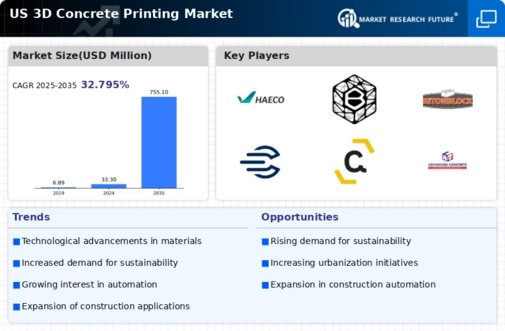The US 3D Concrete Printing Market is experiencing progressive growth, fueled by advancements in technology and a growing demand for sustainable construction practices. The competitive landscape is characterized by several players who are innovating and enhancing their product offerings to gain a significant market share. Collaboration and partnerships among companies are becoming more common, aimed at leveraging complementary strengths and technologies.
As this market evolves, factors such as regulatory considerations, supply chain dynamics, and environmental sustainability are shaping competitive strategies.Emerging technologies, like artificial intelligence and machine learning, are also becoming crucial in optimizing the design and production processes, thereby increasing efficiency and lowering costs. Cazza Construction Technologies has carved a niche in the US 3D Concrete Printing Market by focusing on automation and efficiency in construction processes.
The company leverages cutting-edge technology to deliver impressive solutions that streamline the building process and reduce waste, positioning itself as a leader in innovative construction methods.Cazza's strengths lie in its robust technological framework and an experienced team that leads in research and development. With its commitment to continuous improvement and adaptation to market demands, Cazza is actively engaged in projects that showcase its capabilities, thus enhancing its market presence and reputation among industry stakeholders.HAECO is another influential player in the US 3D Concrete Printing Market, known for its comprehensive portfolio that spans various sectors including residential and commercial construction.
This company emphasizes high-quality construction standards while promoting sustainable practices, which has resonated well within the market. HAECO's strengths are underscored by their significant investments in research to develop innovative 3D printing technologies and building materials.Moreover, the firm's focus on strategic partnerships and potential mergers and acquisitions strengthens its market position, allowing it to expand its capabilities and service offerings. HAECO’s proactive approach in embracing technological advancements and responding to market trends contributes to its robust growth in the competitive US landscape.


















